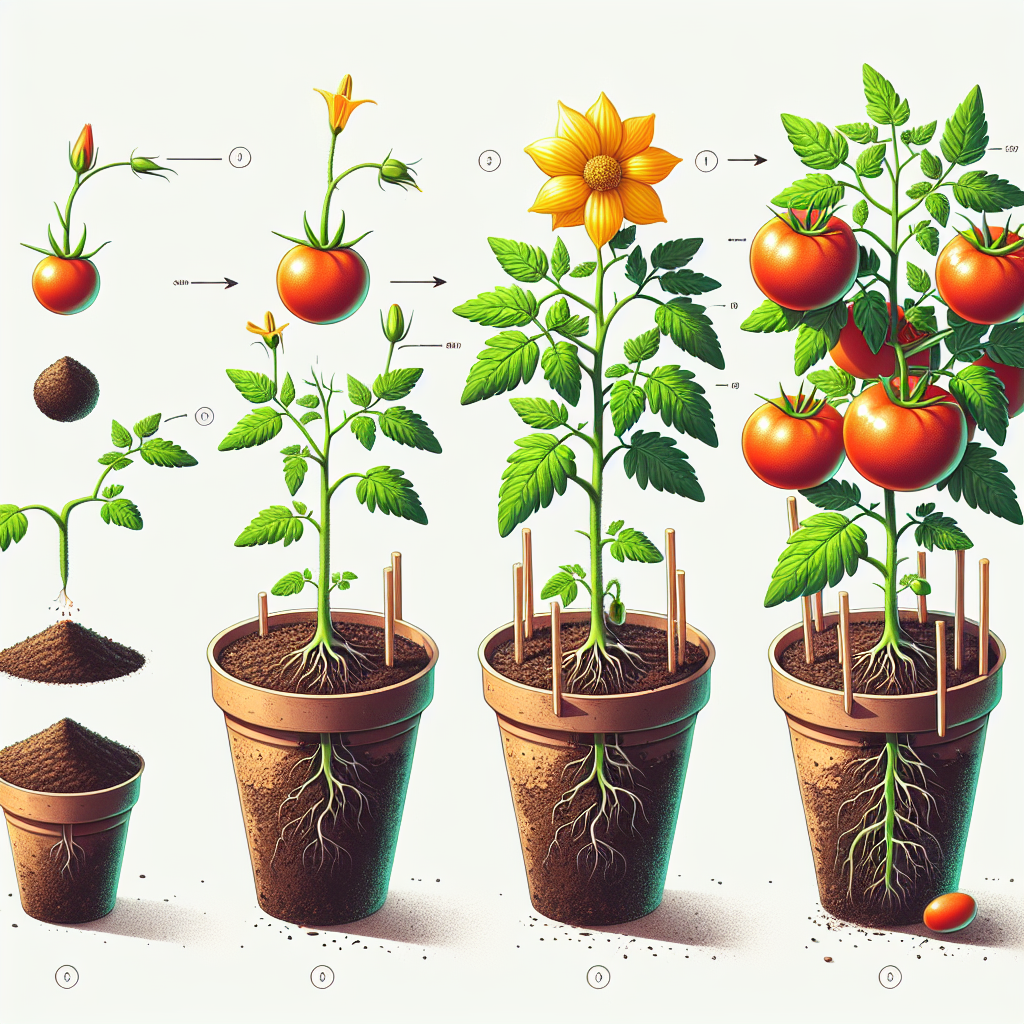
How to grow a tomato plant in a pot
How to Grow a Tomato Plant in a Pot: The Ultimate Guide
Growing tomatoes in pots is an excellent way to enjoy fresh produce, especially if you have limited space, such as a balcony or a small garden. Container gardening allows you to control the soil quality and provides flexibility in terms of light exposure. In this guide, we'll explore everything you need to know about how to grow a tomato plant in a pot, from selecting the right variety to caring for your plants throughout the growing season.
Choosing the Right Tomato Variety for Pot Cultivation
Not all tomato varieties are suitable for growing in pots. When selecting a type, consider the following:
- Determinate Tomatoes: These varieties grow to a certain height and produce fruit all at once, making them ideal for container gardening. Examples include 'Patio Princess' and 'Tiny Tim.'
- Indeterminate Tomatoes: These continue to grow and produce fruit throughout the season, but they require larger pots and stakes for support. Popular options are 'Cherokee Purple' and 'Brandywine.'
Generally, cherry and smaller varieties work well in pots due to their compact growth habits.
Selecting the Best Pot for Your Tomato Plant
The choice of pot can significantly impact the growth and health of your tomato plant. Here are some essential considerations:
- Size: A pot that is at least 5 gallons (19 liters) is recommended for a single tomato plant. Larger pots allow for better root development and more water retention.
- Material: Choose pots made from materials that retain moisture, such as plastic or fiberglass, but ensure they have adequate drainage holes to prevent waterlogging.
- Weight: Consider the weight of the pot, especially if it will be on a balcony or patio. Lightweight options are easier to move around.
Preparing the Pot and Soil
When it comes to how to grow a tomato plant in a pot, quality soil is crucial. Here’s how to prepare your pot:
- Start with a clean pot that has adequate drainage. This prevents root rot and other diseases.
- Fill the pot with a high-quality potting mix specifically designed for container gardens. Avoid using garden soil, as it can become compacted in pots.
- Add organic compost or slow-release fertilizer to enrich the soil with essential nutrients.
Mixing in some perlite or vermiculite can improve aeration and drainage, ensuring your tomato roots have enough oxygen.
Planting Your Tomato Seedling
Once your pot is prepared, it’s time to plant your tomato seedling. Follow these steps for optimal results:
- Make a hole in the center of the pot deep enough to accommodate the entire root system of the seedling.
- Gently remove the seedling from its nursery container, being careful not to damage the roots.
- Place the seedling in the hole, covering the initial stem completely, as tomatoes can develop roots from buried stems.
- Lightly pack the soil around the seedling and water well to remove any air pockets.
Planting deep helps your tomato plant develop a stronger root system, which is essential for stability and nutrient uptake.
Watering Your Tomato Plant
Consistent watering is critical for the health of your tomato plants. Here are some tips:
- Water regularly, aiming to keep the soil consistently moist but not soggy.
- Check the top inch of soil; if it feels dry, it's time to water.
- Water at the base of the plant to prevent fungal diseases and ensure that moisture reaches the root system.
As your tomato plant grows, you may need to increase the watering frequency, especially during hot summer months.
Providing Proper Nutrition
Tomatoes are heavy feeders, so it's essential to provide them with adequate nutrition throughout their growing season:
- Use a balanced fertilizer every 4-6 weeks. A product with an N-P-K ratio of 5-10-10 is ideal.
- Consider organic options like compost tea or fish emulsion for a natural nutrient boost.
- Avoid excessive nitrogen, as this can lead to lush foliage at the expense of fruit production.
Supporting Your Tomato Plant
Depending on whether you chose a determinate or indeterminate variety, your tomato plant may need support:
- Stakes: For indeterminate varieties, drive a sturdy stake into the soil beside the plant when it's young. Gently tie the stems to the stake as they grow.
- Cages: Tomato cages can provide structure for both types, offering support and helping plants maintain an upright position.
Managing Pests and Diseases
Vigilance is crucial when it comes to preventing and managing pests and diseases. Here are common problems and solutions:
- Common Pests: Aphids, whiteflies, and spider mites can attack your tomato plants. Use insecticidal soap or neem oil for management.
- Fungal Diseases: Powdery mildew and blight may appear in humid conditions. Ensure adequate airflow and avoid overhead watering.
“Prevention is better than cure; starting with healthy seedlings and monitoring their growth closely will mitigate many issues.”
Harvesting Your Tomatoes
After several weeks of diligent care, you'll eventually be rewarded with ripe tomatoes. Here’s how to know when to harvest:
- Look for color changes—tomatoes should be fully colored and firm to the touch.
- Ease them off the vine gently; they should come away from the stem with little resistance.
- Harvest regularly to encourage further production of fruits throughout the season.
Conclusion
Growing tomatoes in a pot is a rewarding endeavor that can yield delicious results. By selecting the right variety, preparing your pot correctly, and providing ongoing care, you can enjoy a bountiful harvest right from your balcony or patio. Remember that tomatoes love warmth and sunlight, so ensure they have enough light exposure each day. With a little patience and diligence, you'll be well on your way to understanding how to grow a tomato plant in a pot and enjoying the fruits of your labor!
By Guest, Published on October 10th, 2024